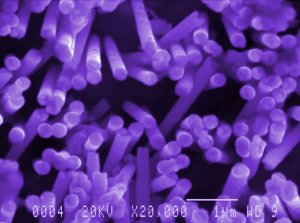Electrochemical sensing devices based on nanostructured materials with increased electrocatalytical-iduced sensitivity
Formaldehyde sensing
Formaldehyde (HCHO) is one the initial products of the oxidation of methanol, which has technological significance in industrial catalytic processes, however it has a detrimental impact on human health, as exposure to formaldehyde leads to various respiratory diseases, blindness, cause cancer and in the worst cases, death.
- We are developing modified printed electrodes via nanostructuring of the receptor elements based on transition metals materials in the nanorods or/and nanotube form, that will be the base for an autonomic sensor platform suitable for in- situ analytical studies.
- Nanostructured materials exhibit excellent catalytic properties, which are the result of high specific surface area and high surface free energy of nanomaterial. This allows faster transfer of electrons between the analyte and the nanostructured metal material, leading to sensors with high reproducibility, a wide linear range, high sensitivity and selectivity.
- Electrochemical sensors are a good substitute for expensive laboratory instrumental analytical methods (high performance liquid chromatography, gas chromatography, spectroscopic and colorimetric methods), where the time from acquisition and sample analysis result is measured in hours. They offer a simple and inexpensive terrain and in-situ method of analysis in much shorter time frames.

Acrylamide sensing
Acrylamide (C3H5NO) is a well-known neurotoxic compound and was in 1994 classified as a potential carcinogen to humans. It is naturally formed in food at high temperatures, as a result of Maillard’s reaction, which occurs between an amino acid and a carbonyl group of a reducing sugar at above 120 °C. In 2018 the European Commission will implement a new regulation on the reduction of the acrylamide in food that will require the food business operators (FBOs) to apply mandatory measures to reduce the presence of acrylamide.
- We are developing a cost-efficient, reliable, high-sensitive, portable electrochemical sensor for detection of carcinogenic chemical; acrylamide in water and water vapours.
- The receptor element us is based on redesigned printed electrodes with terminated carbon nanotubes in the presence of noble metal-based nanostructures as an active electrocatalytic component.
- Receptor elements are combined to autonomous sensor platforms that will facilitate reading, processing and transmitting data with the state-of-the-art electronics for performing potentiostatic measuring techniques.
Contact:
Humidity and oxygen sensors
Humidity and oxygen nanosensors have a significant impact on the quality of life, due to their miniaturization and economy and last but not least the use of environmentally user-friendly materials (reducing the pollution by a small amount of waste material and use of ecologically-friendly materials). Processing of humidity and oxygen nanosize sensors that can operate under severe environmental conditions is of great relevance due to their small size and small weight. These sensors also possess high stability, fast response times and reproducibility. Our research focuses on gas-sensing device formation of one-dimensional (1D) metal oxide materials such as BaTiO3 and Fe doped SrTiO3 nanostructures.
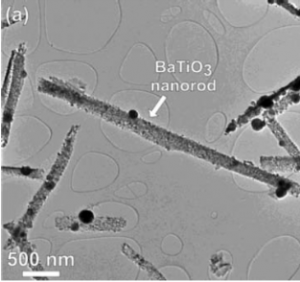
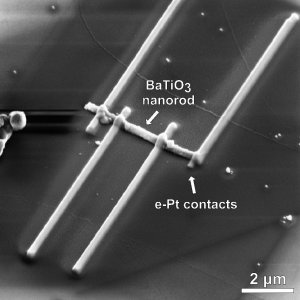
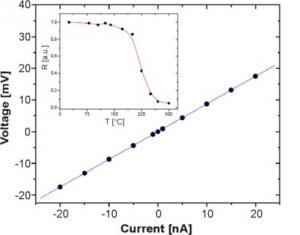
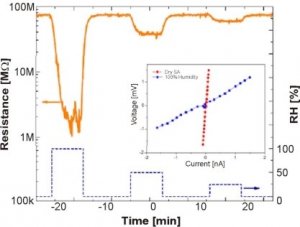
Žagar K. et al., Nanotechnology 22 (2011), p. 385501, Žagar K. et al., J. Mat. Chem. Phys. 141 (2013), p. 9., Žagar K. et al., Nanotechnology 21 (2010) p. 375605, Hernandez-Ramirez F. et al., Chem. Phys. 11 (2009), p. 7105.
